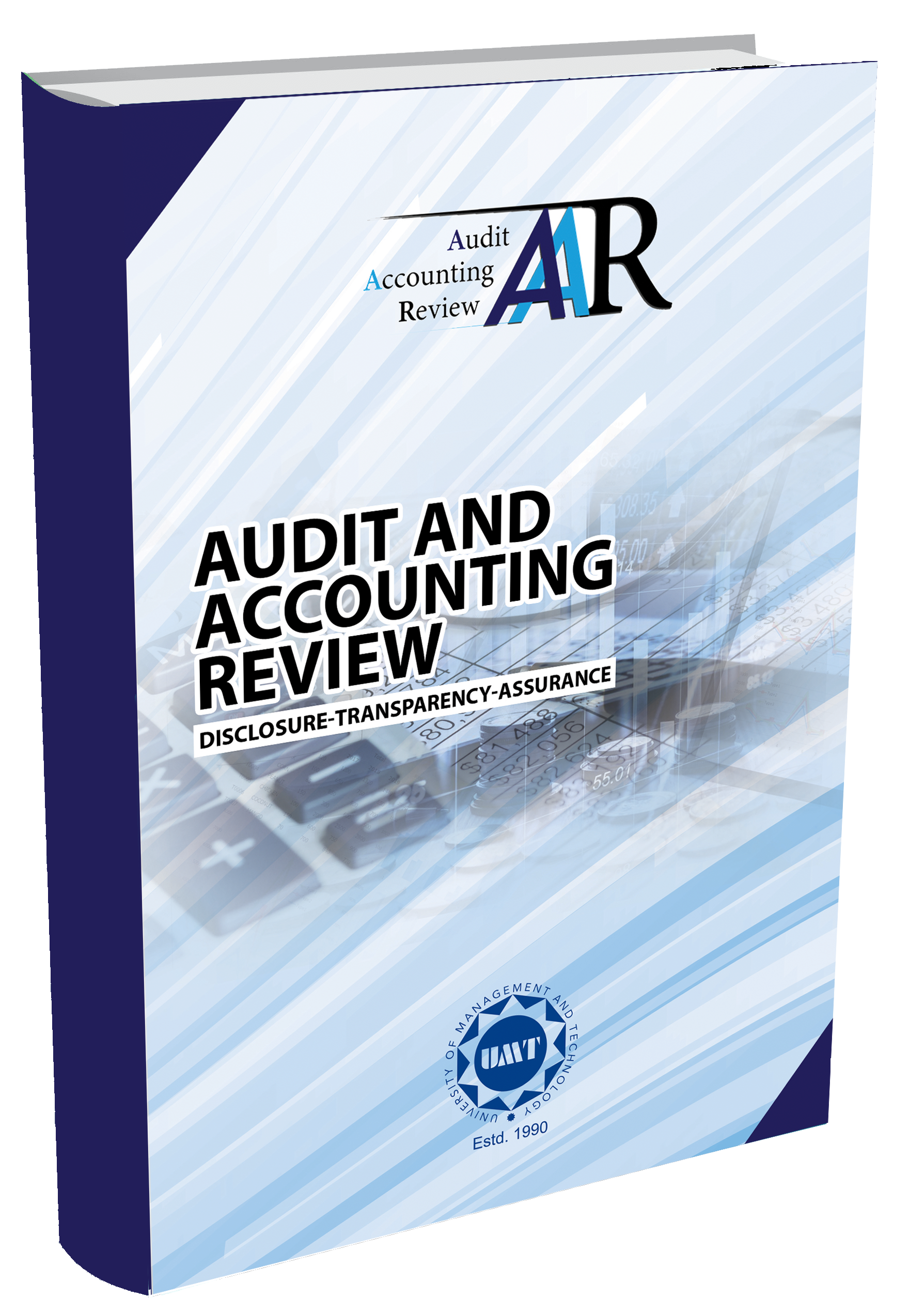Remittances-Exchange Rate Nexus: Evidence from Pakistan
Abstract
 Abstract Views: 158
Abstract Views: 158
The major goal of this study was to estimate the remittances-exchange rate nexus in Pakistan. For this purpose, it adopted a two-step procedure to examine the short-run and long-run nexus between exchange rate and remittances in Pakistan from January 1980 to April 2018. In the first step, an ARMA-GARCH model was utilized along with the generated conditional variance as the measure of the volatility of remittances and rate of exchange, respectively. In the second step, ARDL framework was utilized to check both the long- and short-run nexus between rate of exchange and inflation. The result revealed that past remittances and exchange rate affected current remittances and rate of exchange, significantly. Furthermore, it was also shown that exchange rate has a significant and positive effect on remittances and the volatility of rate of exchange has a significant and positive effect on exchange rate in the long-run. The test of causality showed that a bidirectional causality exists between remittances and the volatility of remittances, as well as between rate of exchange and the volatility of rate of exchange. Thus, it is suggested that the government needs to formulate policies to maintain the stability of exchange rate. Moreover, strong capital and financial markets are required to mitigate the risk of exchange rates.
Keywords: exchange rate, remittances, volatility
Downloads
References
Acosta, P. A., Lartey, E. K., & Mandelman, F. S. (2009). Remittances and the dutch disease. Journal of International Economics, 79(1), 102-116. https://doi.org/10.1016/j.jinteco.2009.06.007
Acosta, P., Fajnzylber, P., & Lopez, J. H. (2007). The impact of remittances on poverty and human capital: evidence from Latin American household surveys (Vol. 4247). World Bank Publications.
Ahmed, J., & Martinez-Zarzoso, I. (2014). What drives bilateral remittances to Pakistan? A gravity model approach. (Discussion Papers, No. 209). University of Göttingen. https://www.econstor.eu/ handle/10419/97486
Alam, S., Wasim, S. M. S., & Ahmad, B. (2017). Macroeconomic determinants of workers’ remittances: Pakistan, a case in point. Global Management Journal for Academic & Corporate Studies, 7(1), 85-102.
Amuedo-Dorantes, C., & Pozo, S. (2004). Workers’ remittances and the real exchange Rate: A paradox of gifts. World Development, 32(8), 1407–1417. https://doi.org/10.1016/j.worlddev.2004.02.004
Barajas, A., Chami, R., Hakura, D., Montiel, P., & Tressel, T. (2011). Workers' remittances and the equilibrium real exchange rate: Theory and evidence [with comment]. Economia, 11(2), 45-99.
Barrett, K. (2013). The effect of remittances on real exchange rate : The case of Jamaica. http://citeseerx.ist.psu.edu/viewdoc/download? doi=10.1.1.662.9451&rep=rep1&type=pdf
Bollerslev, T. (1986). Generalized autoregressive conditional heteroskedasticity. Journal of Econometrics, 31(3), 307-327. https://doi.org/10.1016/0304-4076(86)90063-1
Dickey, D. A., & Fuller, W. A. (1981). Likelihood ratio statistics for autoregressive time series with a unit root. Econometrica: Journal of the Econometric Society, 49(4), 1057-1072. https://doi.org/10.2307/ 1912517
Engle, R. F. (1982). Autoregressive conditional heteroscedasticity with estimates of the variance of United Kingdom inflation. Econometrica: Journal of the Econometric Society, 50(4), 987-1007.
Engle, R. F., & Granger, C. W. (1987). Co-integration and error correction: representation, estimation and testing. Econometrica, 55(2), 251-276. https://doi.org/10.2307/1913236
Granger, C. W. (1988). Causality, cointegration and control. Journal of Economic Dynamics and Control, 12(2-3), 551-559. https://doi.org/10.1016/0165-1889(88)90055-3
Hassan, G. M., & Holmes, M. J. (2013). Remittances and the real effective exchange rate. Applied Economics, 45(35), 4959-4970. https://doi.org/ 10.1080/00036846.2013.808311
Jehan, Z., & Hamid, A. (2017). Exchange rate volatility and capital inflows: role of financial development. Portuguese Economic Journal, 16(3), 189-203. https://doi.org/10.1007/s10258-017-0136-y
Johansen, S., & Juselius, K. (1990). Maximum likelihood estimation and inference on cointegration-with applications to the demand for money. Oxford Bulletin of Economics and Statistics, 52(2), 169-210.
Kamran, A., Alam, S., Ghias, K. A., & Ali, S. N. (2014). Economic determinants of workers’ remittances in Pakistan. In Proceedings of the Seventh International Conference on Management Science and Engineering Management (pp. 415-424). Springer, Berlin, Heidelberg. https://link.springer.com/chapter/10.1007/978-3-642-40078-0_36
Khan, Z., Ali, S., & Khalid, S. (2016). Remittances inflow and real exchange rate: A case study of Pakistan economy. Journal of Chinese Economics, 4(2), 84-94.
Khurshid, A., Kedong, Y., & Calin, A. C., & Khan, K. (2017). The effects of workers’ remittances on exchange rate volatility and exports dynamics - new evidence from Pakistan. The Romanian Economic Journal, 20(63), 29-52.
Lartey, E. K. (2017). Exchange rate flexibility and the effect of remittances on economic growth. Review of Development Economics, 21(1), 103-125. https://doi.org/10.1111/rode.12256
Lartey, E. K., Mandelman, F. S., & Acosta, P. A. (2012). Remittances, exchange rate regimes and the dutch diseases : A panel data analysis. Review of International Economics, 20(2), 377-395. https://doi.org/ 10.1111/j.1467-9396.2012.01028.x
Lopez, H., Molina, L., & Bussolo, M. (2007). Remittances and the real exchange rate policy research (Working Paper No. 4213). World Bank.
Nyan, C. F., Ming, L. C., Fan, T. A., Tien, W. M., & Binn, Y. S. (2013). Relationship beteen remittances and dutch diseaes in Philippines. http://eprints.utar.edu.my/1107/1/FE-2013-1100111.pdf
Pesaran, M. H., Shin, Y., & Smith, R. J. (2001). Bounds testing approaches to the analysis of level relationships. Journal of Applied Econometrics, 16(3), 289-326. https://doi.org/10.1002/jae.616
Phillips, P. C., & Perron, P. (1988). Testing for a unit root in time series regression. Biometrika, 75(2), 335-346. https://doi.org/10.1093/biomet/ 75.2.335
Ratha, D., & Shaw, W. (2007). South-South migration and remittances (No. 102). World Bank Publications.
Rehman, S. U. (2017). Are remittances good or bad: migrant’s remittances, real exchange rate and financial sector development [Thesis]. Department of Management & Social Sciences Capital University of Science & Technology Islamabad. https://cust.edu.pk/ms_thesis/ UploadedFiles/Shams%20Ur%20Rehman%20MMS143069.pdf
Sweidan, O. D. (2013). The effect of exchange rate on exports and imports: The case of Jordan. The International Trade Journal, 27(2), 156-172. https://doi.org/10.1080/08853908.2013.738515
Tuuli, M. (2015). The impact of remittances on the real exchange rate: empirical Evidence from Ghana. Journal of Economic Cooperation & Development, 36(3), 43-66.
World Bank. (2011). Migration and Remittances Factbook 2011. World Bank.
Copyright (c) 2021 Kashif Munir , Nimra Riaz

This work is licensed under a Creative Commons Attribution 4.0 International License.
Authors retain copyright and grant the journal right of first publication with the work simultaneously licensed under a Creative Commons Attribution (CC-BY) 4.0 License that allows others to share the work with an acknowledgement of the work’s authorship and initial publication in this journal.







